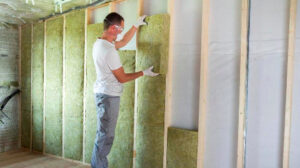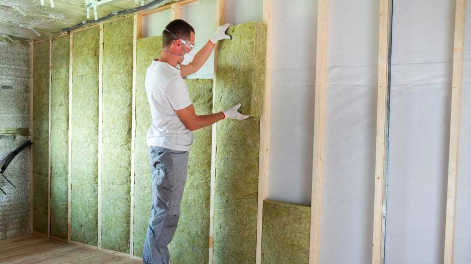Insulation removal may be necessary for various reasons, including pest infestation, mold growth, water damage, and more. Damaged insulation can affect energy efficiency and lead to health issues if contaminated with rodent droppings or urine. Professional Perth Insulation Remover is trained in safety protocols and can help minimize cost by safely removing insulation materials for you. The insulation removal cost can vary significantly depending on the type of insulation and attic size.
Labor
 Insulation removal can be a complex and time-consuming process. It requires special equipment and knowledge to do it properly. This is why many homeowners choose to hire professional insulation removal services. This can save them a lot of time and energy. In addition, it ensures that the job is done correctly and safely.
Insulation removal can be a complex and time-consuming process. It requires special equipment and knowledge to do it properly. This is why many homeowners choose to hire professional insulation removal services. This can save them a lot of time and energy. In addition, it ensures that the job is done correctly and safely.
If there are any hazards in the insulation, such as mold or asbestos, professionals must take extra precautions and may need to quarantine your home for a designated period of time. Additionally, if the insulation contains rodent droppings or urine, the contaminant must be removed and the attic must be cleaned before new insulation can be installed.
The preferred method of removing insulation is by machine. Professionals use a vacuum system that uses a hose to suck up the insulation from the attic. This process is much faster and more efficient than bagging and removing the insulation by hand. It also prevents airborne contaminants from being reintroduced into the home during the removal process.
If the insulation is contaminated with hazardous materials, it must be removed and replaced by professionals. This is often the case when there are signs of mold or rodent droppings. If left unchecked, these contaminants can lead to health problems and poor energy efficiency.
For homeowners who prefer to remove the insulation themselves, a DIY approach can be a cost-effective option. However, it is important to understand that this can be a messy and dangerous project. It is essential to take proper safety precautions and wear appropriate protective gear, including rubber-coated gloves, a mask, or respirator, and goggles. It is also necessary to cover the floors and walls of the attic with a protective covering.
It is also a good idea to purchase a commercial-grade insulation removal vacuum and a ladder. In addition, you should have a HEPA-filtered Shop-Vac and 50-gallon waste bags, as well as a rake and dustpan for cleaning up the mess after the removal process is complete. Homeowners should also make sure they have a suitable place to dispose of the old insulation, such as a large dumpster or local recycling center.
Equipment
Insulation is an important part of a home’s structure. It helps keep the interior of the home comfortable, reduces energy bills, and adds to the resale value of the property. It can also help to control pests and mold. However, over time insulation can lose its effectiveness and need to be replaced. This is especially true for older homes that may have rodent infestations or significant contamination. When replacing insulation, the old insulation must first be removed to allow for a clean and proper installation. This is an arduous and time-consuming process. The cost of this step will vary depending on the type of insulation being installed and how damaged or infested the existing insulation is.
The removal of old insulation can be done either by hand or by machine. Hand removal is typically done for batt insulation, a type of rolled insulation made of fiberglass. Machine removal involves using a vacuum to suck the insulation out of the attic and into a machine that shreds it. The resulting waste is then deposited into a dumpster outside the house.
For this process, a commercial-grade insulation removal vacuum must be used. These vacuums are gas-powered and typically come with around 150 feet of hose to reach from the attic to the outside of the home. If the vacuum is not professional-grade, it can quickly clog, adding to the overall cost of the project.
Other equipment that is often required for this process includes a ladder, a pair of work gloves, a respirator mask, and a dustpan. The respirator mask is essential because it will protect the lungs from airborne particles of mold and other toxins. The pair of work gloves will prevent the hands from becoming irritated and itchy during the removal process. A dustpan is also used to remove any remaining debris that is unable to be sucked out of the attic.
In addition to the equipment, other factors that can add to the overall cost of an insulation removal are obstacles and hazards in the attic that will need to be navigated or removed prior to removing the insulation. These may include ductwork, wiring, or other structural elements. It is also possible that the insulation is contaminated by animal droppings or other hazardous materials. These contaminants can be stirred up by the vacuuming process, releasing toxins into the home.
Materials
Insulation is made of a variety of materials, including fiberglass, cellulose and mineral wool. Fiberglass insulation is commonly used in blown-in and roll/batt type formats, while cellulose and mineral wool are commonly found in rigid board and duct insulation forms. Other types of insulation include spray foam, which can be installed over the existing material or used in gaps and crevices to create an air seal. The type of insulation your home needs will depend on your climate, the R-value you require and any other insulation needs that may exist (e.g., a vapor barrier or soundproofing).
The cost of the materials you need to purchase to remove your old insulation will vary depending on the type you choose, whether you opt for DIY or hire professionals to handle it, and the size of your attic. In general, you will need a ladder, a commercial-grade insulation removal vacuum and an assortment of supplies for the job, such as commercial waste bags, HEPA filter shop vac, 50-gallon garbage bags, rakes, dustpans, and a hose with a large attachment for reaching hard to reach areas. A pair of rubber-coated gloves and a respirator or surgical mask are also recommended to protect yourself from the toxins released during insulation removal.
While removing your own insulation, it is also a good idea to spread plastic sheeting in the attic space over things like wires and ductwork, so that these items are not disturbed. If you decide to partner with professionals for your insulation removal, they will have the necessary equipment and safety gear.
Over time, your home’s attic insulation may lose its even distribution due to home service providers working in the attic, or from animals living in the space and stomping down parts of the attic. This can lead to thicker and thinner areas in the attic, as well as pockets of moisture that are not conducive to the blown-in or vacuuming method of removing insulation. The attic must also be clear of obstructions that can interfere with the vacuuming process, such as slats and nails from previous roofing or other home construction projects. In some cases, insulation may be contaminated by mold or other dangerous substances that will add to the overall removal and disposal costs.
Additional Services
If the attic insulation is damaged or contaminated, you may need to hire professionals for remediation services. These services include removing and disposing of mold, rodents, and other pests that can contaminate your home’s environment. These contaminants can affect the health and safety of your family, so they must be removed and disposed of properly. These additional costs can significantly increase the overall cost of attic insulation removal.
Before the contractors arrive, you can save money by preparing the attic yourself. This includes covering the attic access door, creating a clear pathway to the attic and removing items that could be in the way of the workers. You can also save money by bringing your own tools, equipment, and supplies to the job site.
Insulation removal is a demanding DIY project, and it’s important to consider the costs of labor and equipment rental. Obtaining quotes from several companies can help you determine how much the project will cost and which contractor offers the best value. You should also compare the types of services offered by each company, including whether they offer bundled packages or discounts for multiple projects.
Professional attic insulation removal is typically more expensive than DIY removal, but it’s well worth the investment to ensure the job is completed properly and safely. These professionals have the experience, specialized equipment and expertise to remove the insulation in an efficient manner. They can also prevent damage to the attic and other parts of your home, which can result in higher energy bills.
When hiring an insulation removal service, you should consider whether the company offers a warranty or guarantee on its work. A guarantee will give you peace of mind that the company stands behind its work and will fix any problems with the installation. A warranty should also cover the labor and material cost of removing the old insulation and installing new insulation.
